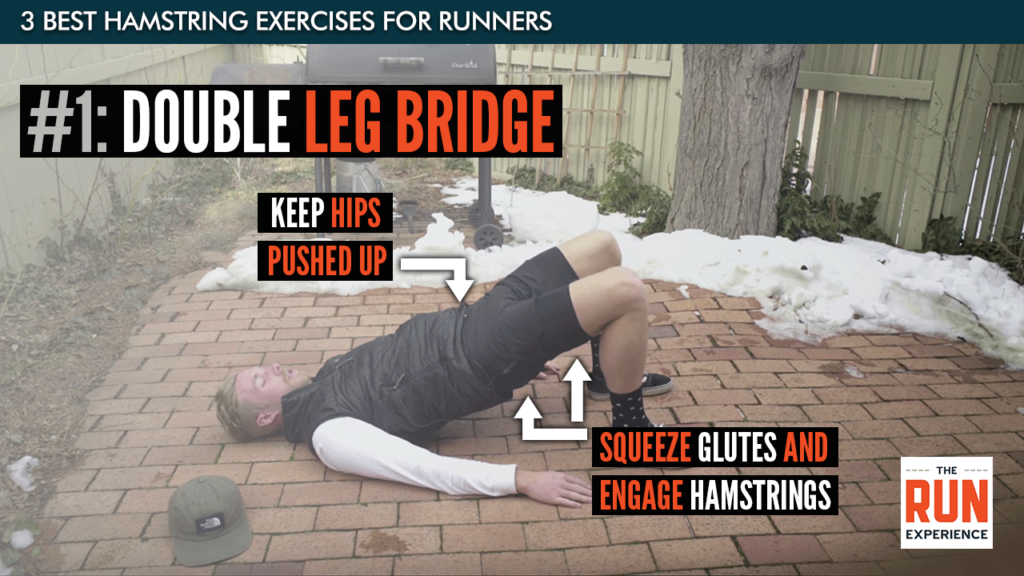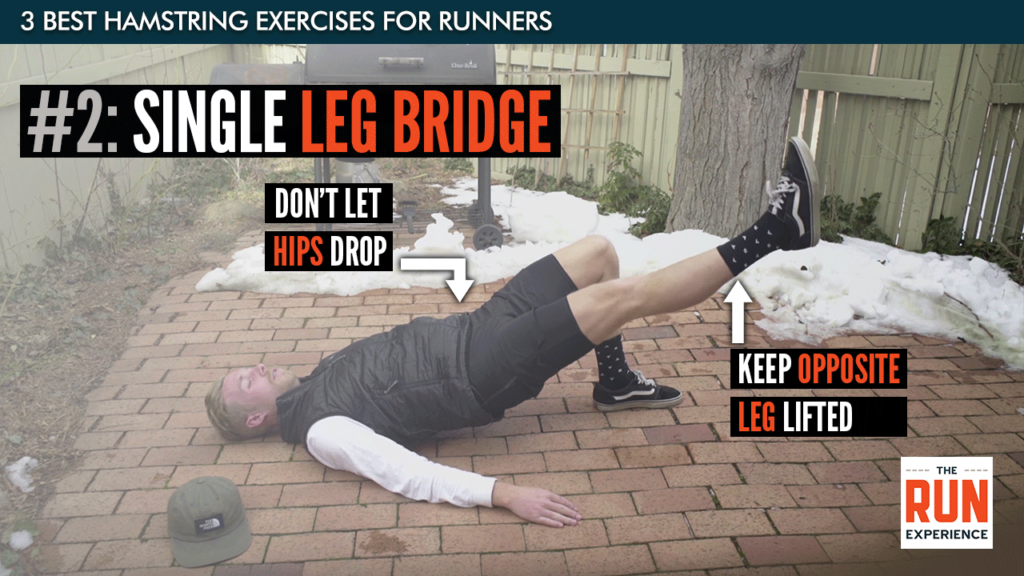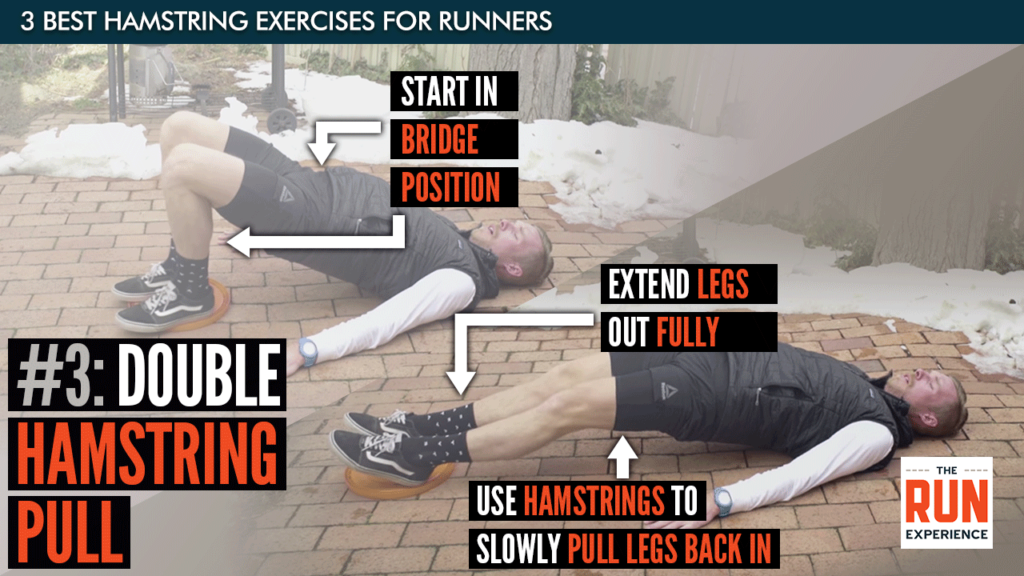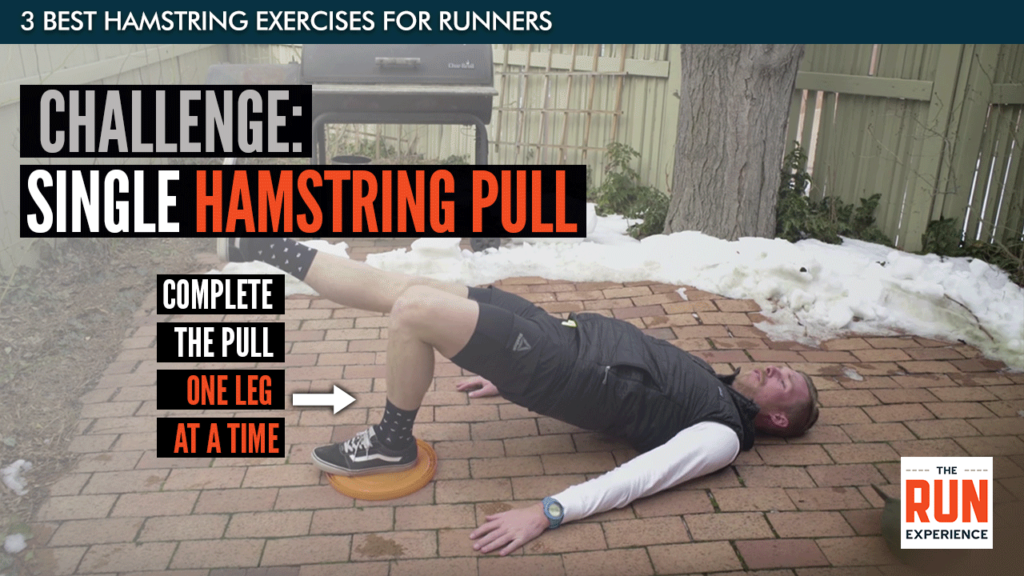3 Best Hamstring Exercises for Runners (Workouts & Tips)
Learn the best hamstring exercises for runners and incorporate them into your workouts for hamstrings, glutes, and lower body.

Hamstring exercises for runners can be a game-changer for your performance. Throw them into a complete workout for hamstrings, and your hamstring strength will soar—and so will your PRs and injury resistance.
Name any of the common trouble spots talked about by runners, and chances are the hamstrings will pop up on that list. The feet, knees, and back get a lot of attention, but the hamstrings can take you out of the run just as quickly. Before that happens to you, learn about how weak or disengaged hamstrings can hinder your run. Follow that up with 3 of the best hamstring exercises to keep them strong!
What Role Do Hamstrings Play in Running?
To start off, it’s important to know what role your hamstrings play in running. Sure, it’s easy enough to say they help move your leg, but what is their job specifically? How can their dysfunction create a path to injury or inefficiency as a runner?
Your hamstrings act as the counterbalance to your quads. Where your quads help push you forward, your hamstrings pull. For every stride you take while running or walking, your hamstrings are there to pull your body back over your leg. Unfortunately, this relationship can become lopsided, which is where hamstring and knee pain come in.
Lack of Hamstring Strength Is Caused by the Following
You don’t have to have a direct injury to your hamstrings for your running to be negatively affected. In fact, two of the biggest contributors to knee pain don’t have anything to do with your knee at all. It comes back to your hammies.
1: Quad dominance
Some runners may find that their quadriceps, the big muscle in the front of your upper thigh, try to do all the work. Whether you’re striding forward, running uphill, or squatting, your quads stabilize your leg and movement.
As a result, your hamstrings get to be freeloaders. They aren’t being recruited to work, so they become inactive. This contributes to an imbalance of power and strength in your leg. Your body loves balance, so when there is an imbalance, it can present as knee pain, sore and crampy calves, and hamstring pain.
2: Inactive Glutes
The third musketeer to the leg powerhouses (in addition to the quads and hamstrings) are the glutes. The glutes contribute a huge amount of strength to the typical runner, especially when accelerating or powering uphill. Sometimes the glutes get lazy, though, and we call them inactive. Inactive glutes aren’t firing properly, so the hamstrings step in to do more work than normal.
Rather than the glutes and hamstrings working together to power you uphill, the hamstring is working overtime on their own, which can fatigue them prematurely. This fatigue can result in acute pain, cramps, or a shift in your running form that can create a domino effect of other problems.
So, knowing a little more about your hamstrings and the role they play in your running, how can you self-test to see if they’re working properly? And if they aren’t, what are the best hamstring exercises to get functioning optimally?
How to Strengthen Hamstrings
Strengthening the hamstrings involves employing exercises and activities that target the muscles located at the back of your thigh. Incorporating a mix of strength training exercises and stretching is essential to ensure they are not only strong but also flexible, which can assist in preventing injury. Here’s how you can work towards strengthening your hamstrings:
- Engage in Targeted Exercises: Which we're going to share with you in just a moment.
- Prioritize Proper Form: Maintain correct alignment to ensure the hamstrings are activated and to avoid injury. Perform each movement with control, avoiding momentum-driven actions.
- Include Plyometric Exercises: Incorporate plyometric exercises to build explosive strength in the hamstrings, such as jump squats, box jumps, and bounding.
- Stretch Regularly: Include leg swings and walking lunges before workouts. Engage in stretches like the seated and standing hamstring stretches post-workout to enhance flexibility.
- Progressive Overload: Introduce more advanced variations as your strength improves. Increase the number of sets and repetitions progressively.
- Focus on Eccentric Strength: Include exercises that emphasize the eccentric (lengthening) phase, which is pivotal for hamstring health and strength.
- Be Consistent: Include hamstring work consistently in your workout schedule. Allow adequate time for muscle recovery between intense hamstring workouts.
3 Best Hamstring Exercises for Runners
The following movements serve a dual purpose. They’re not only great test movements to make sure your hamstrings are working properly, but they can also serve as the rehab and strengthening work needed, if necessary.
Each movement builds on the previous one as far as difficulty and demand, so make sure to start at the beginning and follow the cues to keep your form spot on.
1: Double Leg Bridge
This is our starting point to get the glutes and hamstrings engaged and working. It’ll give you a good frame of reference for how to lift your hips and keep them square when you’ve have both feet supporting you.

The Set Up
- Lay on your back with your feet close to your butt
- Your hands should be flat on the ground by your sides
- Push your hips up by engaging your glutes and hamstrings
- Hold for 30 seconds, being mindful of any cramping in your hamstrings or tenderness in your lower back
If you do feel tenderness in your lower back, chances are you’re not squeezing your butt and using your hamstrings to keep your hips elevated. Though your feet aren’t moving, it can help to think of pulling your feet toward you as a way to engage your hamstrings.
If this movement is already difficult or you’re having trouble holding it for the full 30 seconds, you’ve found your starting point! Practice here in shorter increments of time until you build up to the full 30 seconds.
#2: Single Leg Bridge
Taking away a point of balance will shed even more light into how much–or how little–your hamstrings are working

The Set Up
- Start with the double leg bridge described above
- Slowly lift one leg into the air, leaving your weight on the other leg
- Keep your hips stable, as if you were still on both legs
- Hold for 30 seconds
Take note of how this movement feels on one leg versus two. Did the hip of the lifted leg drop once you picked your leg up? Did the hamstring of your supporting leg start cramping up? If you answered yes to either of these, then this is where you’ll spend some time.
If it feels noticeably different on one side than the other, then it’s a good indicator that you’ve got some hamstring weakness on that side. If 30 seconds on either side is difficult, then you’d probably be well served by working on both sides.
The goal is to be comfortable and stable on each leg for at least 30 seconds (no hip dropping or cramping!) before moving on to the next hamstring exercise progression.
#3: Double Hamstring Pull
This is where it gets tough! The hamstring pull drills are like the bridge on steroids. Not only do you have to support your body in the bridge, but you’re adding dynamic movement to it. Go SLOWLY and be very mindful of your form. You won’t get any benefit from slamming through these, and in fact, risk tweaking your back or straining your hamstrings.
You’ll need something to put your feet on. For slippery surfaces like hardwood or laminate, your socks or a towel will work great. For non-slippery surfaces, furniture sliders or a bucket lid can do the trick.

The Set Up
- Start with the double leg bridge described above with feet on your sliding mechanism
- Ensure your glutes are squeezed and your core is tight
- SLOWLY slide both legs out until the body is fully extended (but not touching the ground)
- Use the hamstrings to pull legs back toward the body to the starting position
The goal is to get 12 pulls in a row. Each pull should feel smooth and controlled, and your hamstrings should cramp up halfway through. That being said, this is not an easy exercise, especially if you’ve been working your way up through the previous two exercises. Feel free to start with only 6 or 8 pulls, and build your way up to the goal of 12.
Regression: To make this a little easier, you can allow your body to make contact with the ground after extending the legs out. This will give your muscles a quick break before you pull back into the starting bridge position.
Challenge: Single Hamstring Pull
This is a progression of the Double Hamstring Pull, and it’s a doozy. You should only use this exercise if your form is spot on in the previous three exercises, and you’ve hit the repetitions goal comfortably.

The Set Up:
- Start in the basic bridge position, with your sliding mechanism under one foot
- Lift the other leg into the air, keeping the hips stable and square
- SLOWLY extend your single leg out
- Use your hamstrings to pull the leg back to your body and the starting point
Again, your goal is to get 12 pulls on each leg. You might start with only one or two pulls per leg, and build from there. That’s totally okay! This challenge requires control and strength to complete, so don’t rush to get through them.
Why Choose Bodyweight Hamstring Exercises?
You might have noticed that all the workouts we described above are bodyweight hamstring exercises. Why did we forgo weights for these strength exercises?
Good question.
Here are a few reasons you want to add bodyweight hamstring exercises to your routine:
1. Accessibility and Convenience:
- No Equipment Required: Bodyweight exercises generally do not require any equipment, making them accessible to everyone.
- Anywhere, Anytime: You can perform these exercises at home, in a park, or wherever you find suitable, providing flexibility and convenience.
2. Safety and Lower Injury Risk:
- Reduced Strain: Without added weights, there’s typically less strain on the joints, minimizing injury risk.
- Control: Using your body weight allows you to control your movements better and adjust as per your fitness level.
3. Foundation Building:
- Basic Strength: They help build foundational strength, which can be crucial for progressing to more advanced exercises or weight training.
- Muscle Activation: Learning to activate and engage the hamstrings properly is fundamental for movement patterns in various sports and activities.
4. Functional Fitness:
- Mimic Everyday Movements: Bodyweight exercises often mimic natural movements, enhancing your ability to perform daily activities effortlessly.
- Movement Quality: Improving the strength and flexibility of your hamstrings enhances overall movement quality and efficiency.
5. Development of Stabilizing Muscles:
- Engage Stabilizers: These exercises often engage smaller, stabilizing muscles that might be overlooked in weight training.
- Balance: As you perform bodyweight exercises, you also work on your balance, which is crucial for functional movement and injury prevention.
6. Versatility:
- Variety: There’s a wide variety of bodyweight exercises that can target the hamstrings from different angles.
- Adaptability: They can be easily modified to increase or decrease difficulty, catering to various fitness levels and needs.
7. Comprehensiveness:
- Holistic Approach: Many bodyweight hamstring exercises also engage other muscle groups, providing a more comprehensive workout.
- Coordination: They often require coordination between various muscle groups, enhancing neuromuscular communication.
8. Cost-Effectiveness:
- Free of Charge: No need for gym memberships or purchasing equipment, making it a cost-effective way to stay fit and healthy.
Add These Exercises to Your Workouts for Hamstrings
You can incorporate our three best hamstring exercises into your current strength training routine, or you can practice them as part of your dynamic warm up before heading out on a run.
If you don’t yet have a strength training practice or you want to know more about our run training programs, but sure to download our app for access to new workouts each week and tons of training resources!
